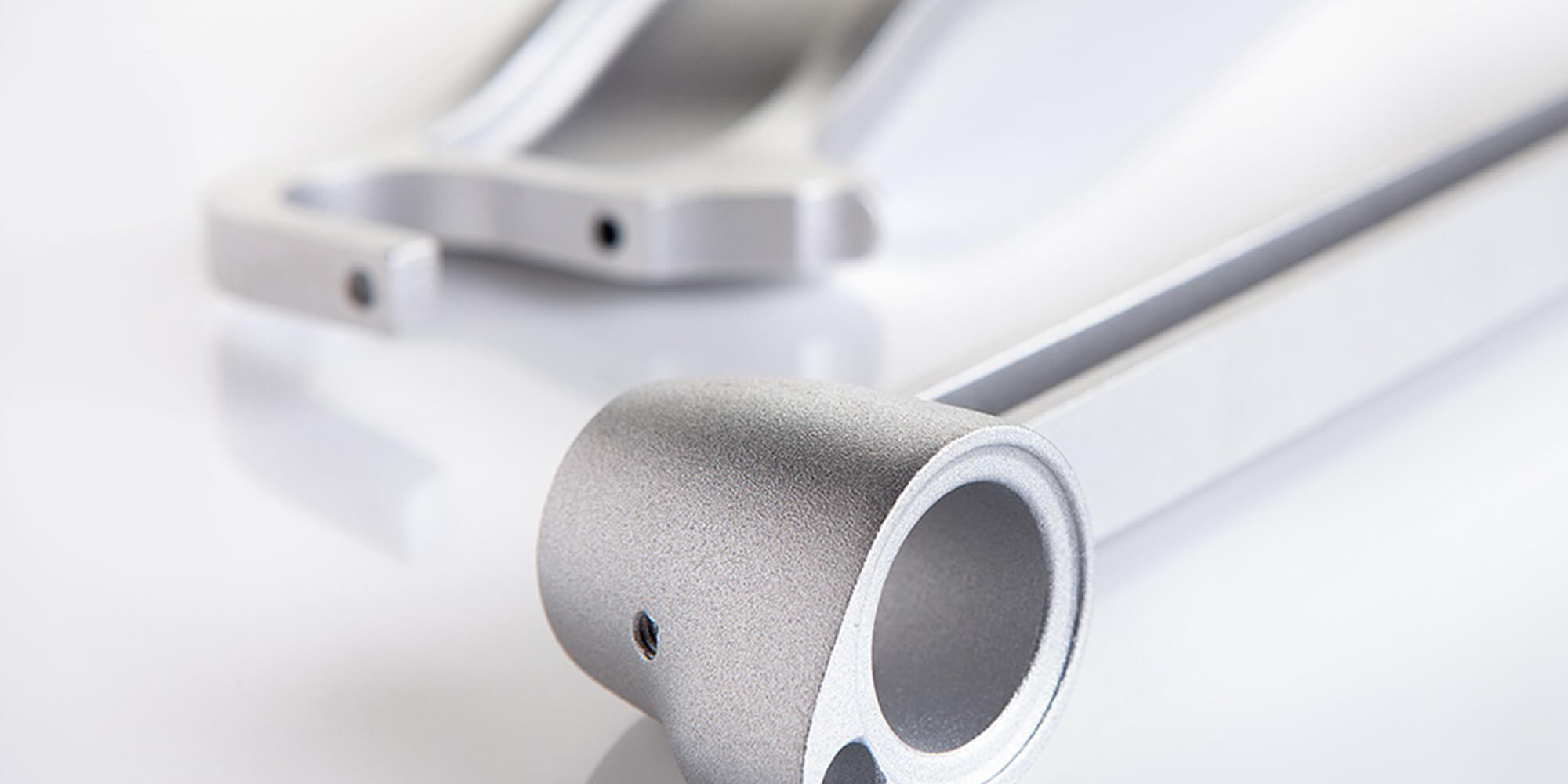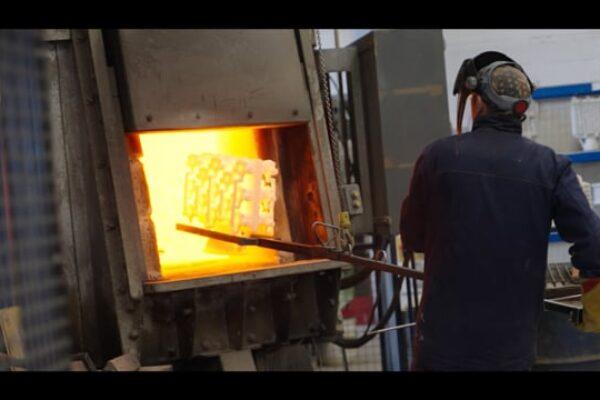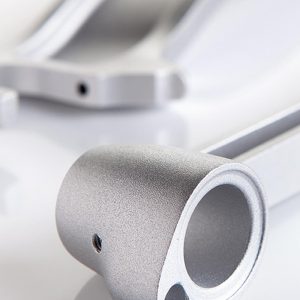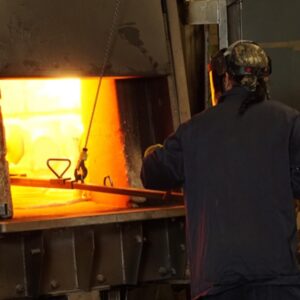Forging
Forging, like the pressure die casting process, is extremely repeatable. Heated softened alloy stock is presented into a split tool and tremendous pressure is exerted, forcing the alloy to take the shape of the two halves of the tooling. The resulting finish of the part takes the form and surface finish of the tool cavity.
Tooling parting line flash is removed by a series of cropping and finishing and polishing operations. These parting line area surface finishes are dependent on the controls of these processes. We can typically achieve surface finishes of 1.6 microns or better for aluminium alloy parts. For brass alloy finishes we can achieve slightly less than 1.6 microns.
Typical surface treatments for forged parts
Certain aluminium grades can be clear anodised, with generally the 6 series of alloys being anodised successfully. It is more difficult to achieve a clear anodised finish on the 7 series grades due to their chemical composition.
Typically, a product is supplied with a glass bead finish in preparation for powder coating, or given a glass bead finish and chemically treated for corrosion protection.
Forging tolerances
Due to the nature of the forging process and requirements for draft angles, product mass variations and materials, tolerances must be negotiated on a project by project basis.
Product mass, material and design affect the tolerances that can be achieved by this process.
Theoretical exactness is rarely attained, and it is therefore necessary to make allowances for deviations. These allowances can take the form of post forging machine allowances or hand finishing processes.




